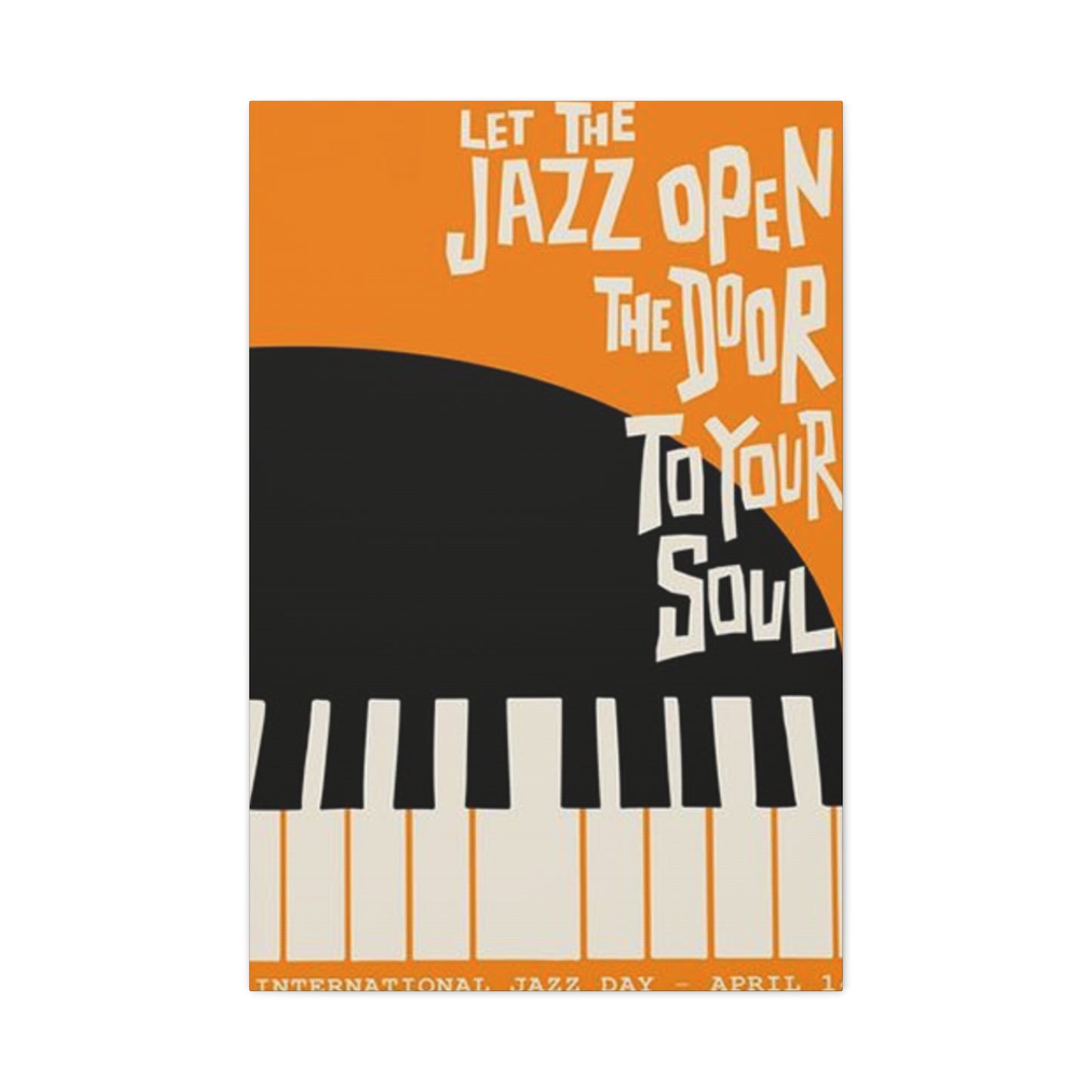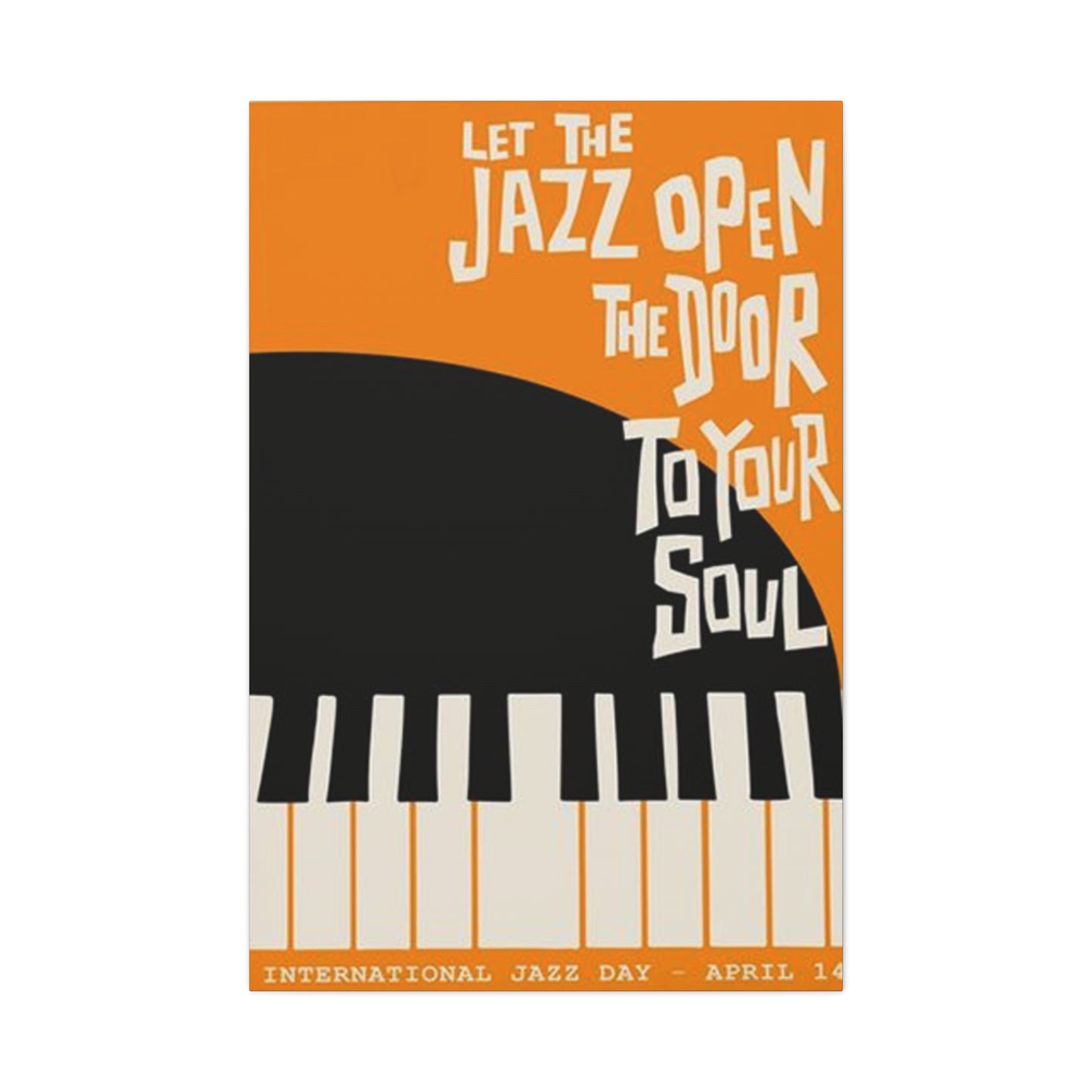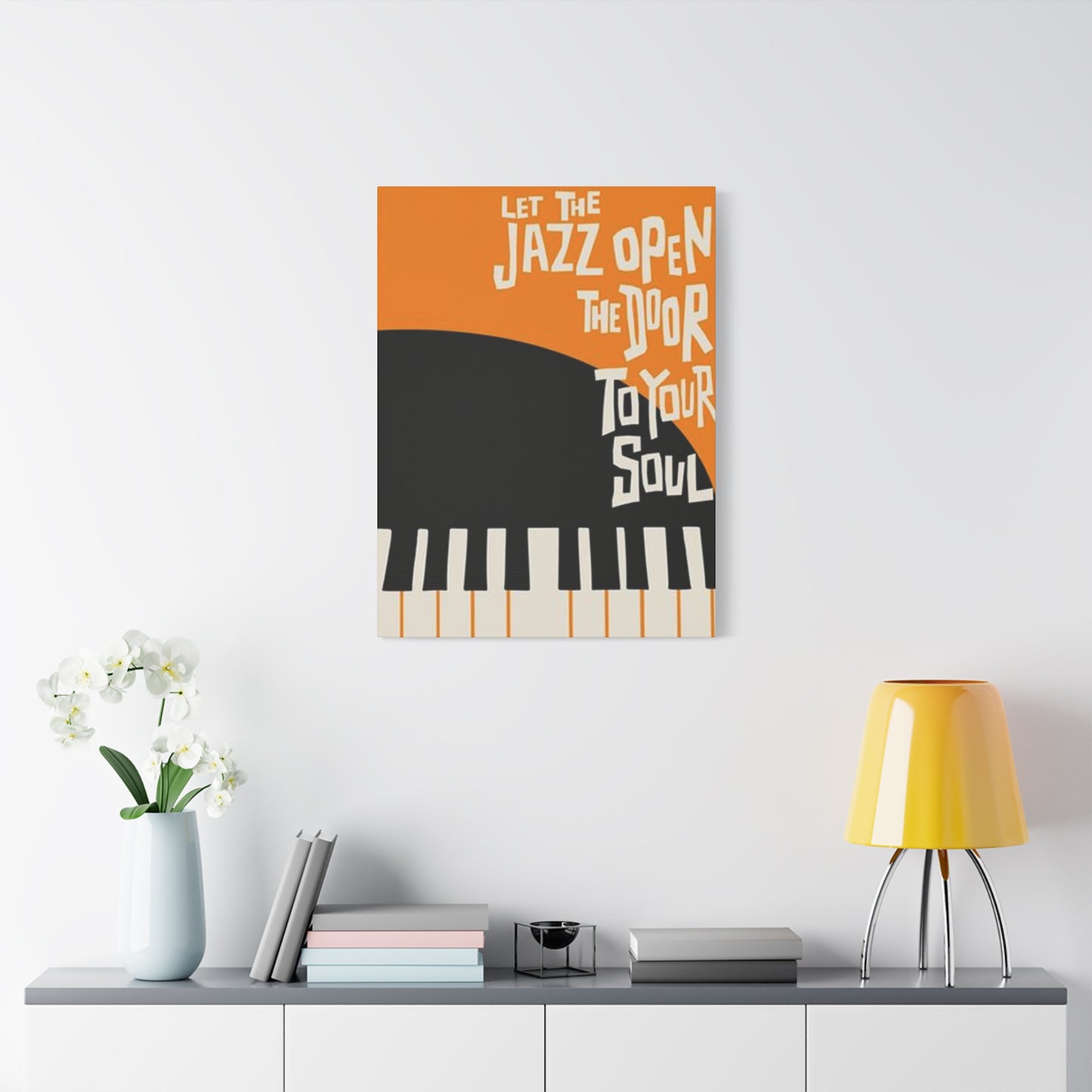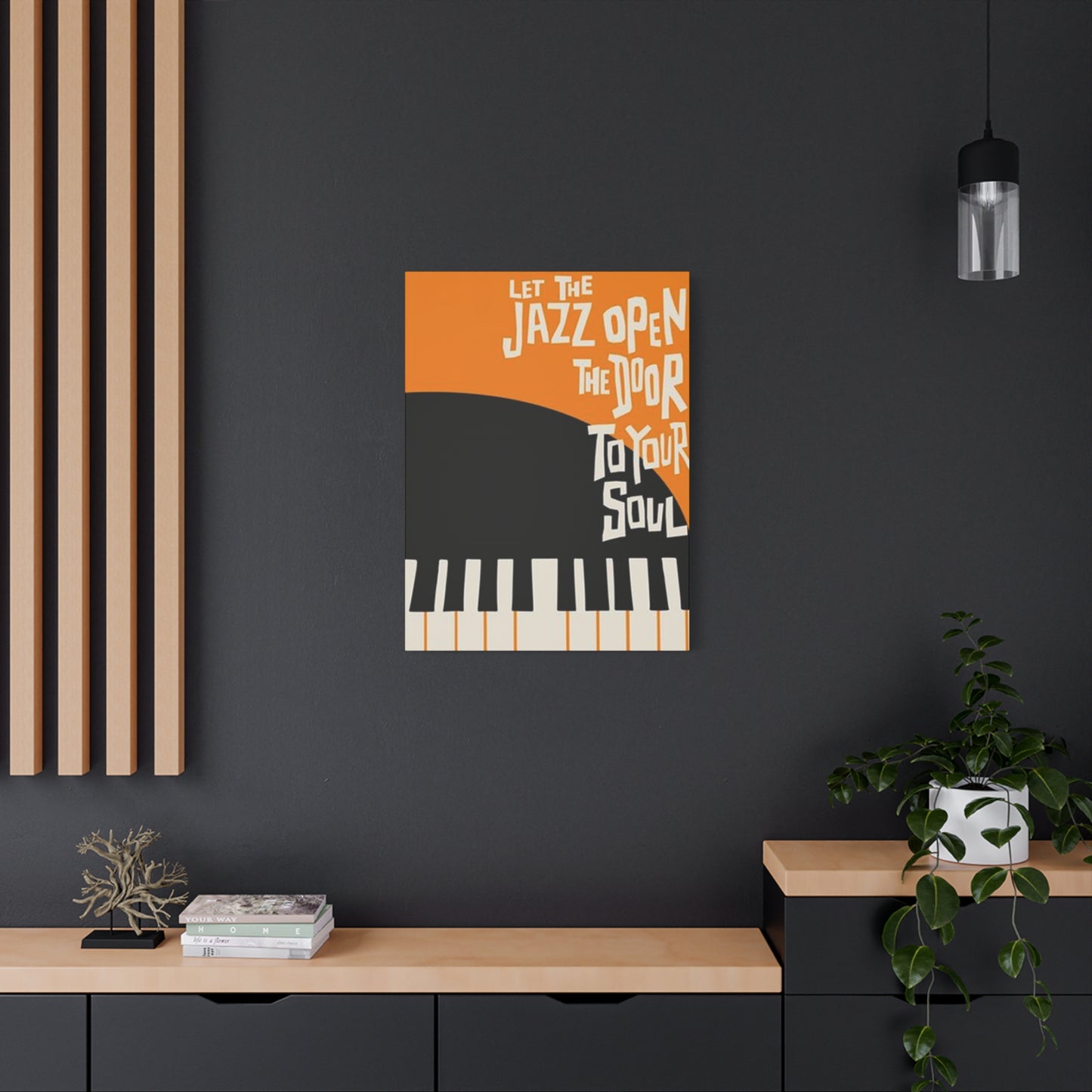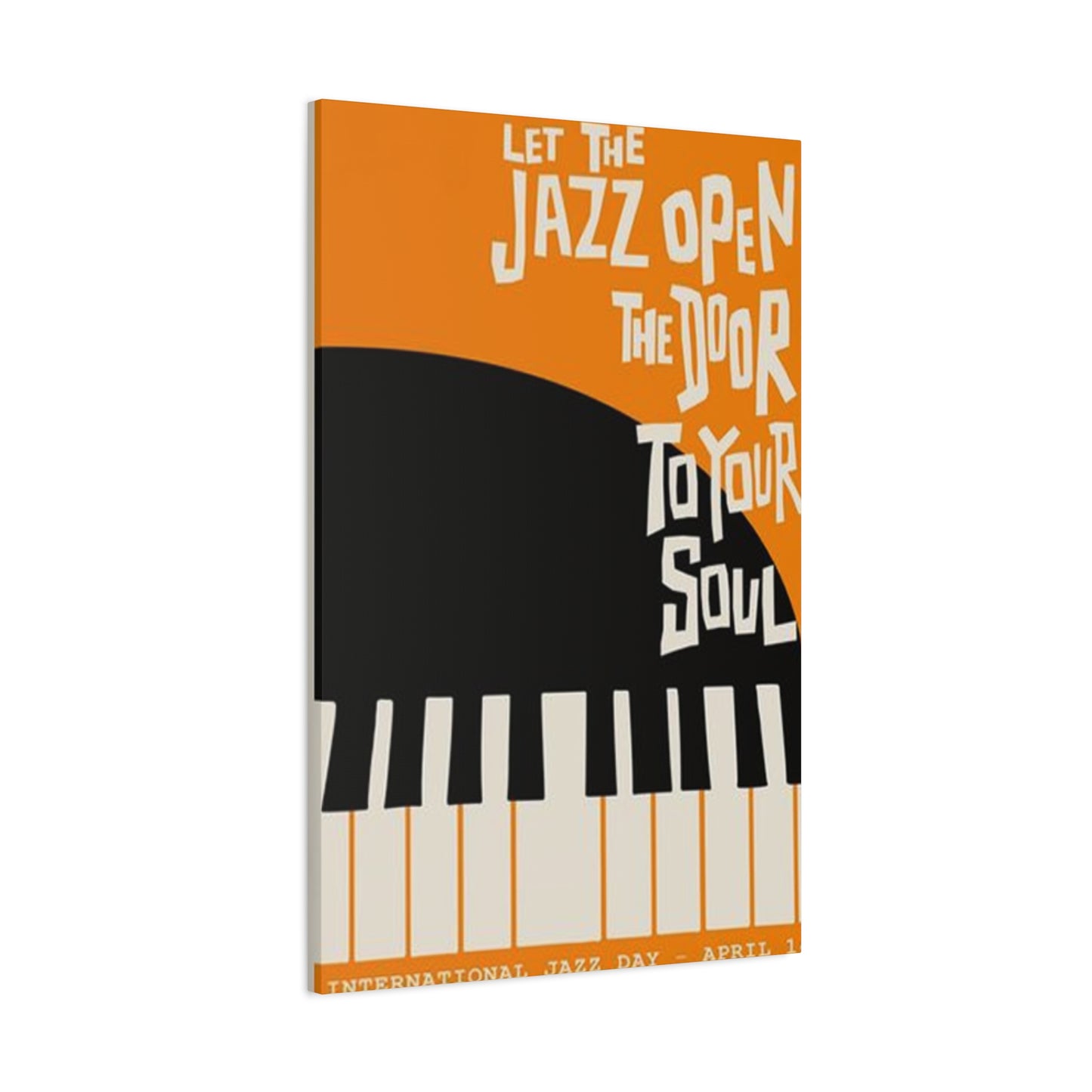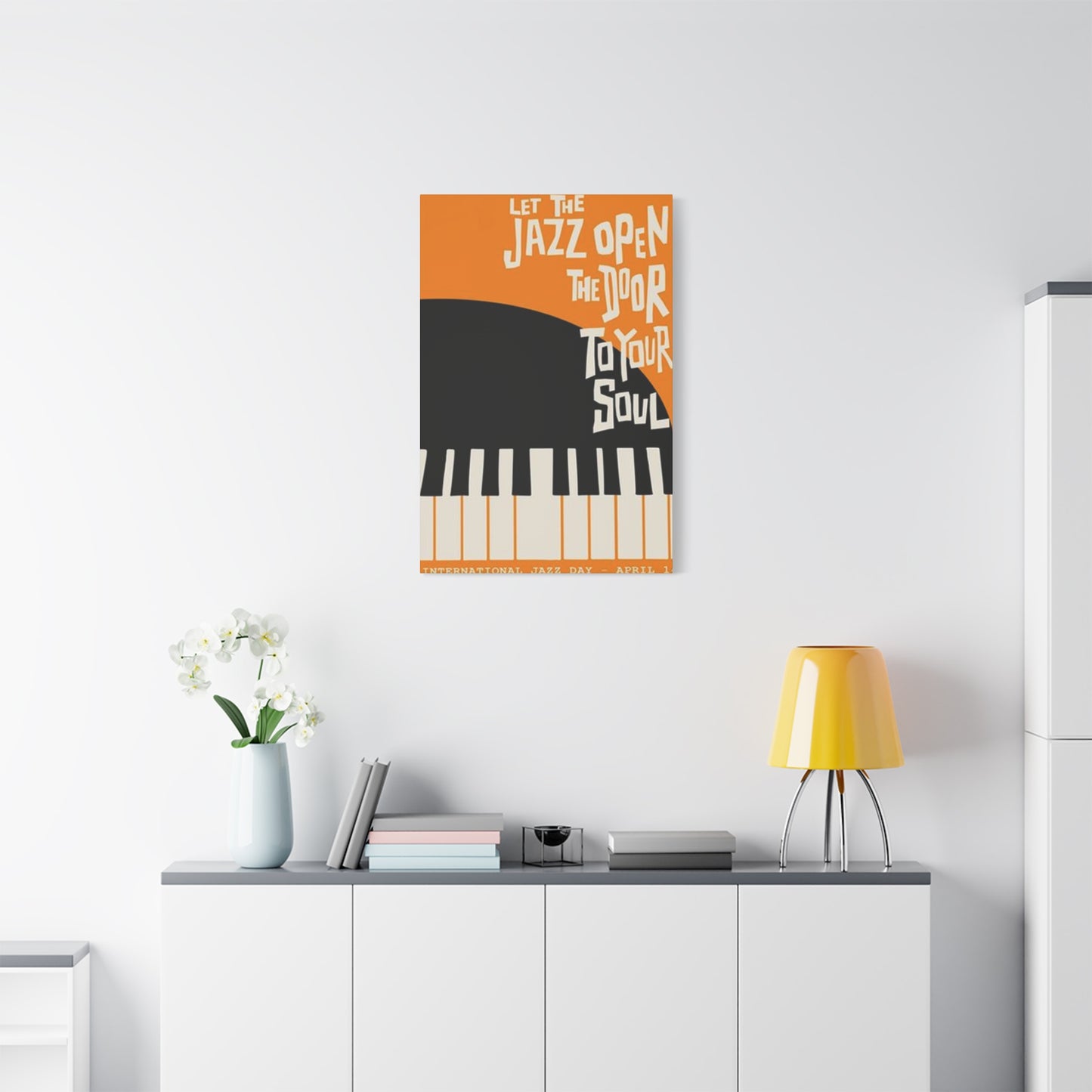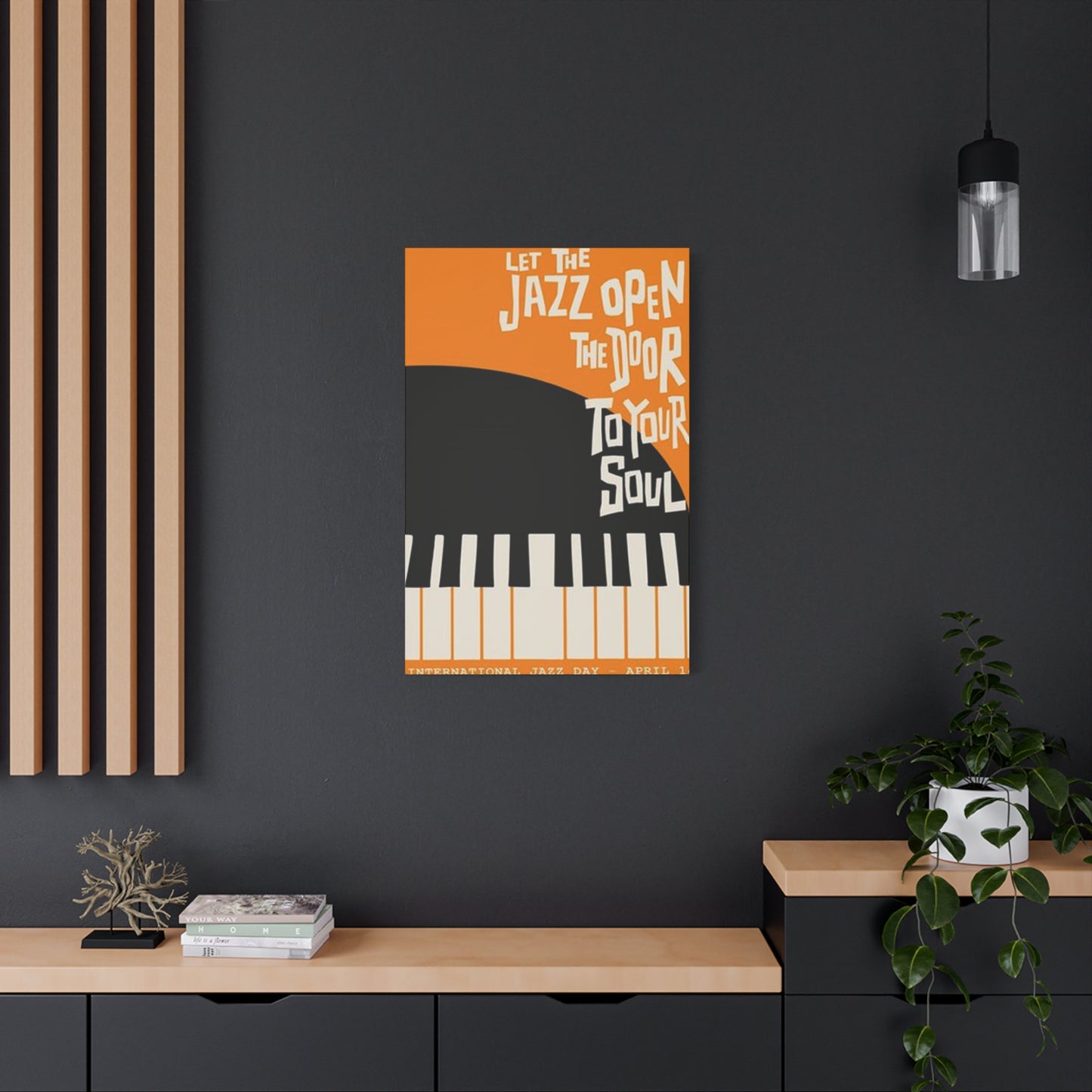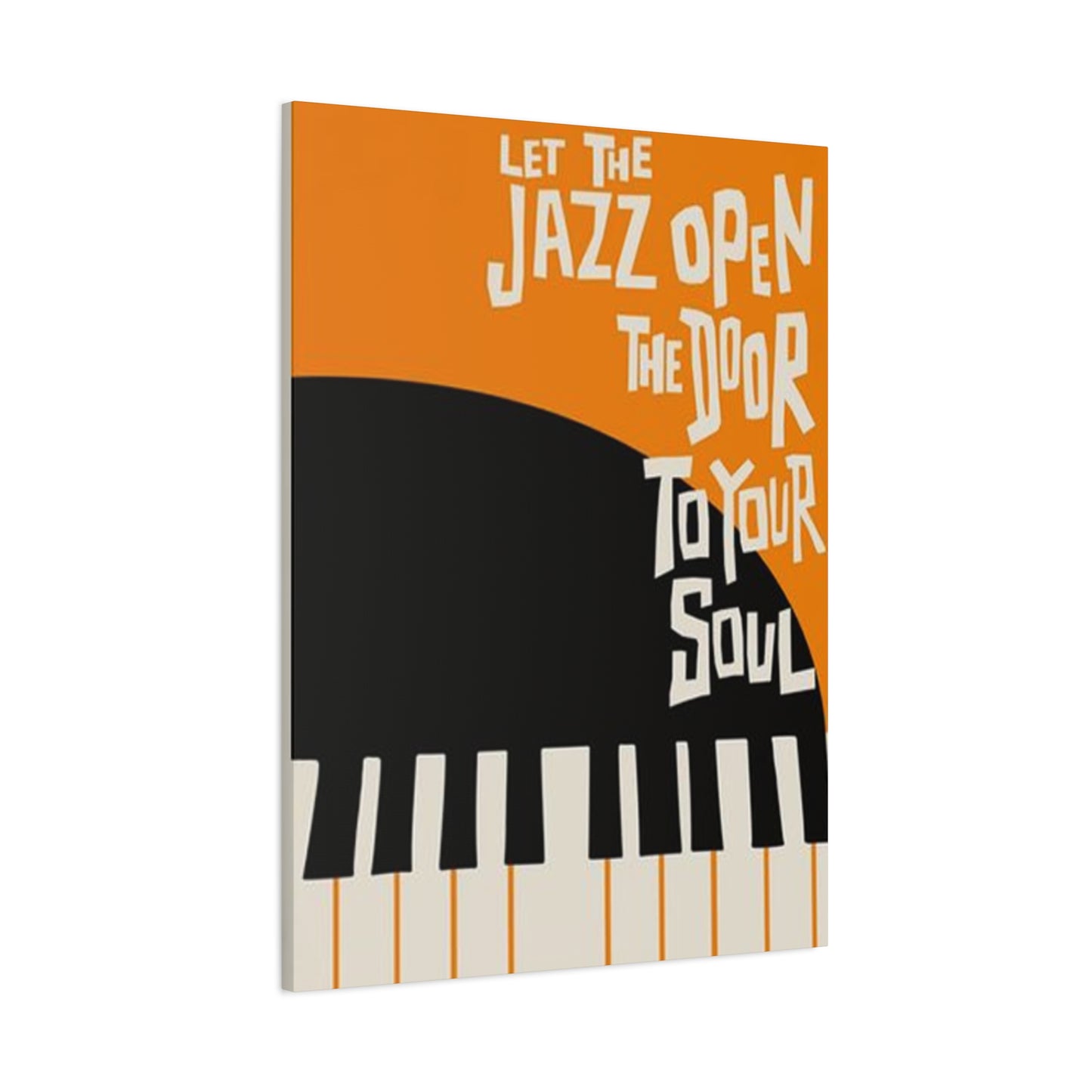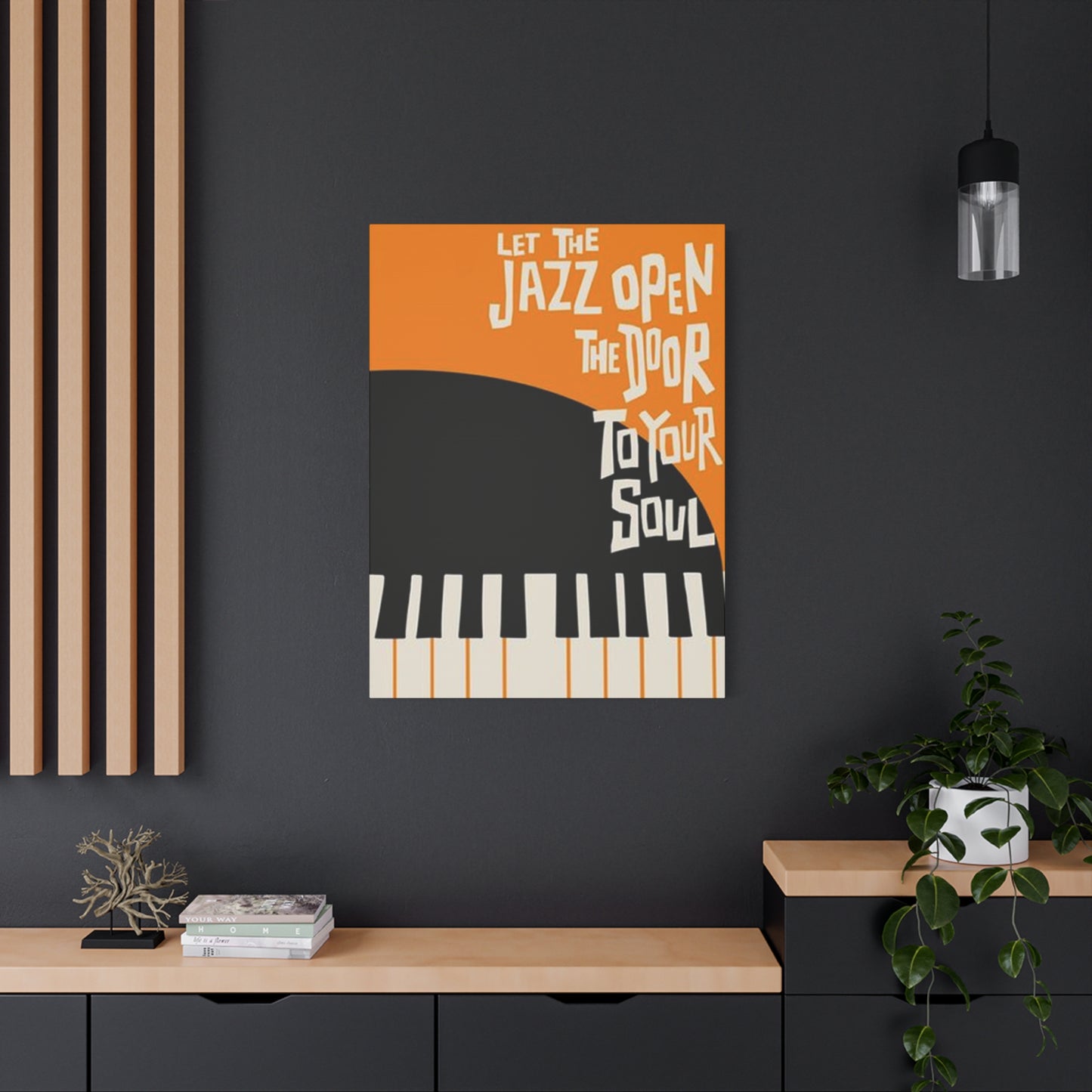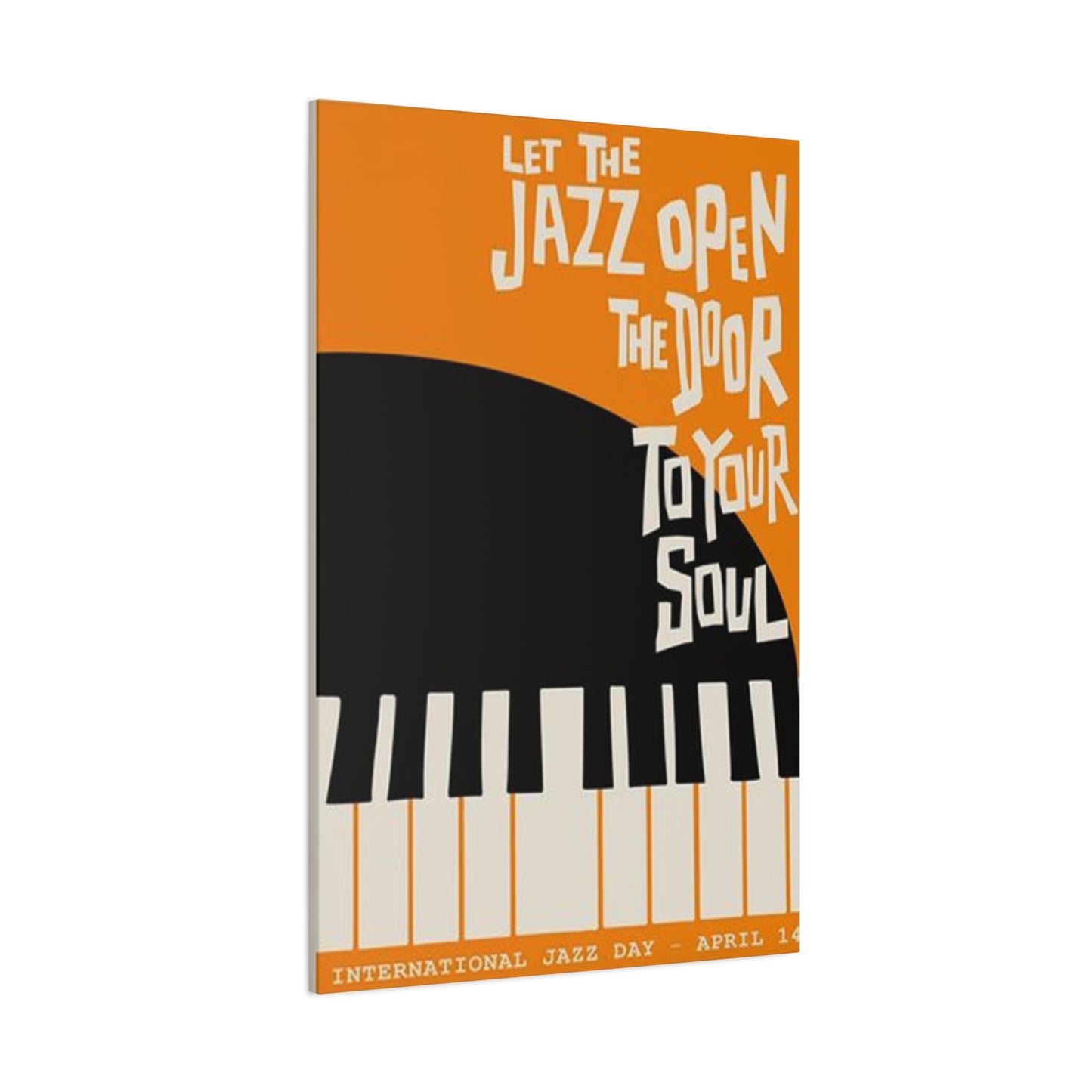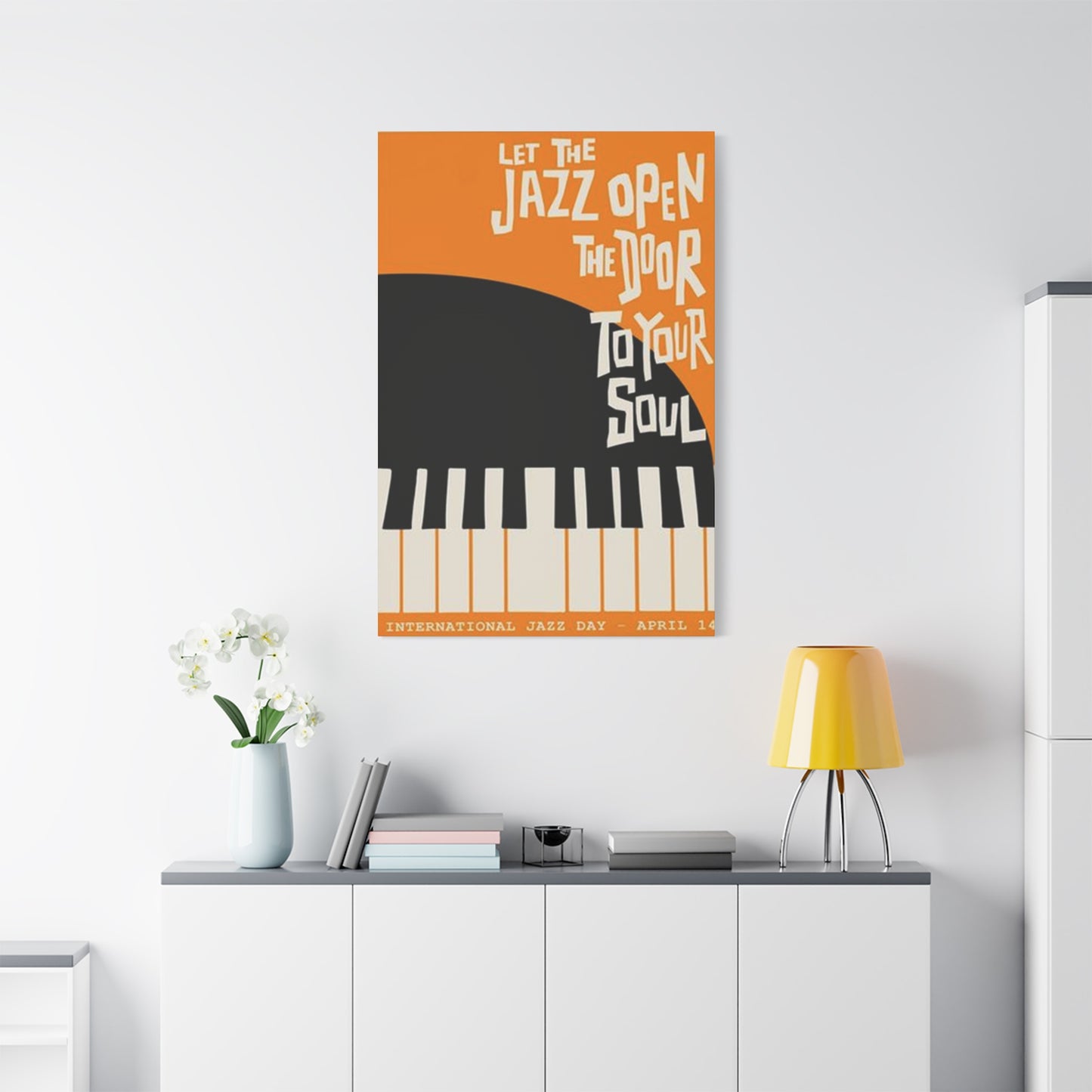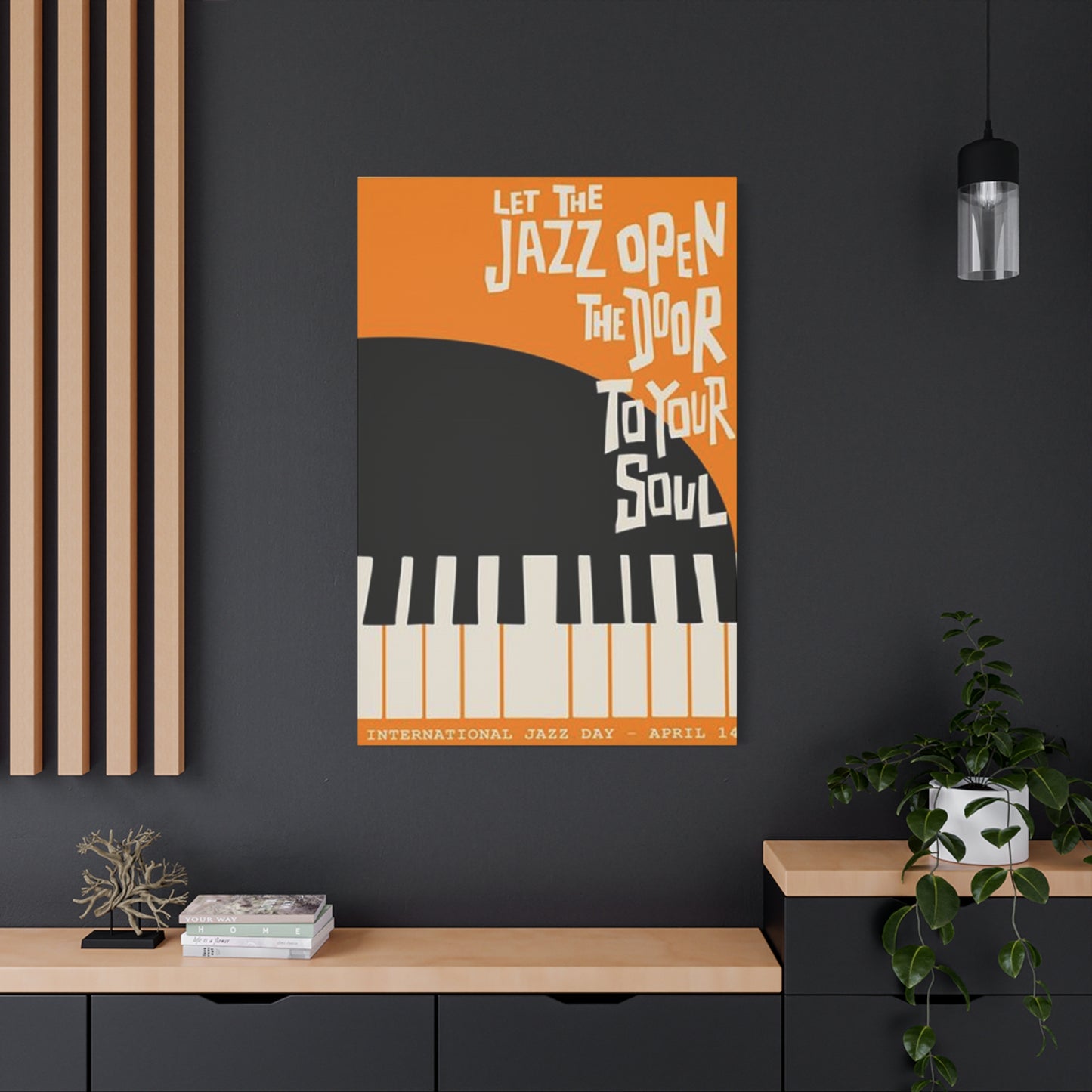The Art of Sound: How International Jazz Day Wall Art Honors Musical Greats
Jazz music represents one of the most influential cultural movements in modern history, bringing together diverse communities through rhythm, improvisation, and soulful melodies. The celebration dedicated to this remarkable genre has inspired countless enthusiasts to bring the spirit of this musical tradition into their living spaces through artistic wall decorations. Canvas prints featuring jazz themes have become increasingly popular among music lovers, interior designers, and art collectors who appreciate the fusion of visual artistry with musical heritage. These decorative pieces serve not only as aesthetic enhancements but also as meaningful tributes to a musical legacy that has shaped generations.
The connection between jazz music and visual art has always been profound, with both forms of expression sharing common elements of spontaneity, creativity, and emotional depth. When individuals choose to display jazz-themed canvas artwork in their homes, offices, or entertainment spaces, they are making a statement about their appreciation for cultural richness and artistic excellence. The canvas medium provides an ideal platform for capturing the energy, passion, and dynamism that characterize this musical genre, allowing viewers to experience the essence of jazz through visual representation.
Throughout this exploration, we will delve into various aspects of how canvas prints celebrating this musical tradition can transform living spaces, reflect personal tastes, and honor the legacy of legendary musicians who have contributed to this art form. From selecting the perfect piece to understanding the cultural significance behind different artistic styles, this comprehensive journey will provide valuable insights for anyone interested in incorporating jazz-inspired wall art into their environment.
The Cultural Heritage Behind the Musical Celebration
The recognition of this musical genre on a global scale began when international educational and cultural organizations officially designated a specific day to highlight its diplomatic role in bringing people together across all corners of the world. This acknowledgment reflects the understanding that jazz transcends geographical boundaries and linguistic barriers, serving as a universal language that speaks directly to the human spirit. The roots of this musical tradition stretch deep into history, emerging from a complex blend of cultural influences that came together to create something entirely new and revolutionary.
The origins of jazz can be traced back to the early twentieth century, when diverse musical traditions converged in urban centers, particularly in the southern regions of America. African rhythmic patterns, European harmonic structures, and American folk melodies merged together, creating a sound that was simultaneously familiar and groundbreaking. This fusion reflected the multicultural character of the communities where it developed, making jazz inherently inclusive and adaptive. The improvisation that became central to this genre symbolized freedom of expression and individual creativity within a collective framework.
As jazz evolved through various periods, from ragtime and swing to bebop and fusion, it continuously absorbed influences from different cultures and musical traditions. Each era brought new innovations, new artists, and new interpretations of what jazz could be. The music spread across continents, finding enthusiastic audiences in Europe, Asia, Africa, and South America. In each location, local musicians added their own cultural flavors, creating distinct regional variations while maintaining the core elements that defined the genre. This global journey transformed jazz from an American art form into a truly international phenomenon.
Every year, this musical art form receives recognition for its role in promoting peace, fostering dialogue among different cultures, celebrating diversity, and upholding respect for human rights and dignity, while working to eliminate discrimination, support gender equality, and champion freedom of expression. These values are deeply embedded in the history of jazz, which has often served as a platform for social commentary and cultural resistance. Musicians used their art to address issues of inequality, injustice, and human rights, making jazz not just entertainment but also a vehicle for social change.
Exploring Different Artistic Styles in Jazz Canvas Prints
The world of jazz-inspired canvas art encompasses an remarkable range of artistic styles, each offering unique interpretations of musical themes and concepts. Photographic prints capture authentic moments from performances, rehearsals, and candid interactions between musicians. These images provide documentary value, preserving historical moments while also serving as compelling visual art. Black and white photography, particularly from the golden age of jazz, conveys a timeless quality that resonates with both nostalgia and contemporary aesthetic preferences.
Abstract representations of jazz concepts allow artists to visually express the improvisational nature of the music. These works might use flowing lines, bold colors, and dynamic compositions to suggest movement, rhythm, and spontaneity. Abstract jazz art often emphasizes the emotional and energetic qualities of the music rather than depicting literal scenes or figures. This approach gives viewers freedom to interpret the artwork based on their own experiences and associations with jazz, creating a more personal connection with the piece.
Portrait-based canvas prints focus on the faces and figures of legendary musicians who have shaped the genre. These works range from realistic renderings to stylized interpretations that emphasize certain characteristics or capture the essence of the performer's artistic identity. Portraits serve multiple functions in jazz art, honoring individual contributions to the genre while also humanizing the musicians and making their achievements accessible to audiences. Seeing the faces of jazz legends on a wall creates a sense of connection and inspiration.
Vintage poster designs and album cover reproductions represent another popular category of jazz canvas art. These pieces often feature typography, graphic design elements, and color schemes characteristic of specific eras in jazz history. Displaying vintage-style artwork can evoke the atmosphere of historic jazz clubs, record stores, and concert venues. The retro aesthetic appeals to both those who experienced those eras firsthand and younger generations who appreciate vintage design sensibilities.
Colorful interpretations bring vibrancy and energy to jazz artwork, using bold hues and dynamic color combinations to express the lively spirit of the music. These pieces might depict musical instruments in unexpected color palettes, create abstract patterns inspired by musical structures, or portray musicians in expressive, non-realistic color schemes. The use of color adds another dimension to the artwork, creating visual interest and emotional impact that complements the auditory experience of jazz music.
Silhouette-based designs offer a minimalist approach to jazz art, using simplified shapes to suggest musicians, instruments, or musical concepts. These works often create striking visual statements through contrast and negative space. The simplicity of silhouette art can be particularly effective in modern or contemporary interior design schemes, where clean lines and uncluttered compositions are valued. Despite their minimalist appearance, silhouette pieces can convey significant emotional and cultural content.
Selecting the Perfect Canvas Print for Your Space
Choosing the right jazz-themed canvas print involves considering multiple factors that relate to both the artwork itself and the environment where it will be displayed. The physical space available for the artwork determines important aspects such as size, orientation, and composition. A large wall in a living room or entertainment area can accommodate expansive pieces or multi-panel installations, while smaller spaces might benefit from more modest sizes that don't overwhelm the area. Understanding the spatial requirements helps narrow down options and ensures the selected piece will fit properly.
The existing color scheme and decorating style of a room significantly influence which jazz canvas prints will work well in the space. Rooms decorated in neutral tones might benefit from artwork with bold colors that serve as focal points, while spaces with existing color schemes might require artwork that complements or coordinates with those hues. The artistic style of the canvas print should also harmonize with the overall aesthetic of the room, whether that's modern minimalist, traditional elegant, eclectic bohemian, or industrial contemporary.
Personal connection to specific musicians, eras, or aspects of jazz should guide the selection process. Artwork that resonates personally creates deeper satisfaction and more meaningful decorating outcomes. If someone has particular affinity for certain jazz legends, specific instruments, or particular periods in jazz history, seeking artwork that reflects those interests creates authentic expression of personal taste. The emotional response to a piece of art often proves more important than following decorating rules or trends.
Quality considerations ensure that canvas prints will maintain their appearance and provide lasting satisfaction. High-resolution printing technology produces clear, detailed images with accurate color reproduction. The canvas material itself should be durable and properly prepared to receive ink. Gallery-wrapped canvases, where the image extends around the sides of the frame, provide a finished appearance that doesn't require additional framing. Protective coatings help prevent fading and damage from environmental factors.
The intended atmosphere or mood for a space influences artwork selection. Jazz canvas prints can contribute to creating various ambiences, from sophisticated and elegant to energetic and dynamic. Artwork depicting quiet, intimate jazz moments might suit bedrooms or reading areas, while pieces capturing the excitement of live performance could energize entertainment spaces or social areas. Considering how the artwork affects the overall feeling of a room helps create cohesive, intentional interior design.
Budget constraints are practical considerations that affect artwork choices. Canvas prints are available across wide price ranges, from affordable reproductions to limited edition works by established artists. Understanding what's available within a budget helps focus the search and prevents disappointment. Many retailers offer sales, discounts, or payment plans that make quality artwork more accessible. Investing in a piece that truly resonates often provides better value than purchasing multiple items that don't create meaningful connections.
The Artistic Process Behind Jazz Canvas Prints
Creating canvas prints that effectively capture the essence of jazz involves multiple stages of artistic and technical work. The journey typically begins with concept development, where artists or designers envision how to represent musical themes visually. This conceptual phase requires deep understanding of jazz, its history, cultural significance, and aesthetic qualities. Artists consider what aspects of the music they want to emphasize, whether focusing on specific musicians, historical moments, abstract musical concepts, or emotional qualities associated with the genre.
Photographic jazz art begins with capturing images at performances, in studios, or through arranged portrait sessions. Photographers must possess both technical skills and musical knowledge to anticipate and capture meaningful moments. The ability to photograph in low-light conditions typical of jazz venues presents technical challenges. Photographers look for expressions, gestures, and interactions that reveal the personality of musicians and the nature of their art. The best photographs capture not just what performers look like but who they are as artists.
For illustrated or painted jazz artwork, artists work through sketching and composition development before creating final pieces. This process involves deciding on perspectives, proportions, and arrangements of elements. Artists make choices about which details to emphasize, which to simplify, and which to omit entirely. These decisions shape how viewers understand and interpret the finished artwork. The composition directs attention, creates visual flow, and communicates meaning beyond the literal content of the image.
Digital artists use software tools to create or manipulate jazz-themed images. Digital techniques allow for precise control over colors, effects, and compositions. Artists can combine multiple images, add textures, adjust lighting, and experiment with various treatments before finalizing designs. Digital creation also facilitates producing artwork in multiple sizes and configurations without loss of quality. The flexibility of digital tools has expanded creative possibilities for jazz artwork significantly.
Color selection plays crucial roles in conveying mood and meaning in jazz canvas prints. Warm colors like reds, oranges, and golds can suggest the energy and passion of performance. Cool blues and purples might evoke the contemplative or melancholic aspects of certain jazz styles. High-contrast black and white schemes create drama and focus attention on form and composition. Artists use color theory principles to create harmonious or deliberately discordant palettes that support their artistic intentions.
The printing process transforms digital or photographic images into physical canvas artwork. High-quality printers use archival inks that resist fading and maintain color accuracy over time. The resolution of the printed image determines the clarity and detail visible in the finished piece. Professional printing facilities calibrate equipment regularly to ensure consistent results. The substrate, typically cotton or polyester canvas, receives special preparation to accept ink properly and provide longevity.
Famous Musicians Featured in Canvas Art
The pantheon of jazz includes numerous artists whose contributions have been immortalized in canvas artwork. Early pioneers who helped establish jazz as a distinct musical form appear frequently in historical photographic prints and artistic tributes. These founding figures brought together diverse musical influences and established conventions that would define the genre for generations. Their innovations in rhythm, harmony, and improvisation created the foundation upon which all subsequent jazz was built.
Vocalists who brought jazz into mainstream consciousness through their recordings and performances are popular subjects for canvas art. These singers possessed unique vocal qualities and interpretive abilities that made their performances unforgettable. Their images often capture the emotional intensity and charisma that made them legendary performers. Portraits of jazz vocalists frequently emphasize their expressive faces and commanding stage presence, qualities that translated into both their music and visual representations.
Instrumentalists who revolutionized how their instruments were played in jazz contexts appear prominently in canvas artwork. Trumpet players who developed new techniques and expanded the instrument's expressive possibilities are featured in both action shots from performances and formal portraits. Saxophonists whose innovative approaches to the instrument influenced entire generations of musicians are depicted in artwork that captures their concentration and passion. Pianists who redefined their instrument's role in jazz ensembles appear in images showing their physical interaction with keyboards.
Bandleaders who assembled groundbreaking ensembles and pushed jazz in new directions are subjects of canvas art that often depicts them in leadership roles. These images might show them conducting, arranging music, or interacting with band members. The leadership role in jazz requires both musical excellence and interpersonal skills, qualities that photographers and artists attempt to capture. Bandleaders often served as innovators who introduced new styles and sounds that influenced the entire genre.
Composers who created the standard repertoire of jazz, the songs that musicians have interpreted and reinterpreted countless times, are honored in artwork that acknowledges their creative contributions. While some composers were also performers, others worked primarily behind the scenes, creating the material that others brought to life. Canvas art featuring composers sometimes includes visual references to their most famous compositions, connecting the person with their creative output.
Collaborative groups that achieved fame as ensembles rather than individual artists are featured in canvas prints showing the collective nature of jazz performance. These images capture the interactions between musicians, the visual dynamics of ensemble playing, and the collaborative spirit that makes jazz distinctive. Group photographs and artistic renderings of ensembles emphasize that jazz, despite having famous individuals, fundamentally involves cooperation and collective creativity.
Incorporating Jazz Canvas Prints into Interior Design
Successfully integrating jazz-themed canvas artwork into interior spaces requires thoughtful consideration of placement, arrangement, and context. The wall where artwork hangs significantly affects its impact and visibility. Focal walls, the first surfaces seen when entering rooms, provide ideal locations for important pieces. Placing significant artwork on focal walls ensures it receives appropriate attention and serves as an intended centerpiece. Other wall locations work for secondary pieces that complement the main artwork.
Height placement follows general principles that suggest artwork should be positioned at average eye level for comfortable viewing. This typically means the center of the piece should be approximately 57 to 60 inches from the floor. Adjustments may be necessary based on ceiling heights, furniture arrangements, and viewer preferences. In spaces where people will primarily sit, like dining rooms or living rooms, slightly lower placement accommodates seated viewing positions.
Grouping multiple canvas prints creates gallery walls that tell more complex visual stories than single pieces. Arrangements can follow symmetrical patterns for formal, balanced appearances or asymmetrical layouts for more dynamic, contemporary looks. Gallery walls featuring jazz themes might organize pieces chronologically, by artist, by instrument, or by color scheme. Planning arrangements before hanging prevents unnecessary holes in walls and ensures satisfactory final results. Using paper templates to map out arrangements helps visualize outcomes.
Lighting enhances artwork visibility and impact. Picture lights mounted above or below canvas prints direct illumination specifically onto the artwork. Track lighting allows for adjustable highlighting of multiple pieces. Natural light can beautifully illuminate artwork during daytime hours but should be monitored to prevent fading. Positioning artwork away from direct sunlight or using UV-protective glass when possible helps preserve colors. Ambient lighting in rooms affects how artwork appears during evening hours.
Furniture arrangements in relation to artwork create cohesive design schemes. Sofas, chairs, and tables positioned to face or complement artwork help integrate pieces into overall room layouts. Furniture shouldn't obstruct views of artwork or make pieces difficult to appreciate. The scale of furniture should be proportional to the size of artwork, with larger pieces requiring substantial artwork to maintain visual balance. Creating conversation areas around artwork encourages engagement with the pieces.
Color coordination between artwork and surrounding decor creates harmonious or intentionally contrasting effects. Pulling accent colors from canvas prints into pillows, throws, or decorative objects ties design elements together. Alternatively, allowing artwork to introduce completely new colors into neutral spaces creates dynamic focal points. Understanding basic color theory helps make decisions about whether to harmonize or contrast colors in relation to artwork.
Thematic consistency throughout spaces creates unified design narratives. Rooms dedicated to music or entertainment naturally accommodate jazz artwork, but pieces can work in various settings when properly selected and placed. Home offices might feature inspiring portraits of innovative jazz musicians. Bedrooms could include calming, contemplative jazz scenes. Kitchens or dining areas might display artwork depicting the social aspects of jazz. Matching artwork themes to room functions creates meaningful connections.
Historical Evolution of Jazz Imagery
The visual representation of jazz has evolved significantly throughout the genre's history, reflecting changing artistic trends, cultural attitudes, and commercial interests. Early imagery associated with jazz often appeared in promotional materials for performances, with posters and flyers advertising shows in various venues. These early promotional pieces established visual conventions for representing jazz, often emphasizing energy, sophistication, and entertainment value. The graphic design of these materials reflected broader design trends of their eras while developing distinctive jazz aesthetics.
The golden age of jazz coincided with significant developments in photography and photojournalism. Photographers began documenting jazz performances, creating iconic images that captured the atmosphere of jazz clubs, the intensity of performances, and the personalities of musicians. These photographs served journalistic purposes while also functioning as artistic works in their own right. The documentary tradition in jazz photography established visual archives that preserve important cultural history and continue to inspire contemporary artwork.
Album cover design became an important arena for jazz-related visual art as the recording industry developed. Record labels commissioned graphic designers and photographers to create covers that would attract consumers and represent the music visually. Some album covers became as famous as the music they packaged, with bold graphic designs, striking photographs, and innovative typography. The small square format of album covers created unique design challenges and opportunities that pushed creative boundaries.
The association between jazz and fine art developed through mutual influences and collaborations. Visual artists attended jazz performances and created works inspired by the music. Musicians appreciated and collected visual art, sometimes incorporating artistic elements into their performances and presentations. This cross-pollination enriched both art forms and created natural connections between jazz and visual culture. Galleries sometimes hosted exhibitions combining jazz performances with visual art displays.
The civil rights movement influenced jazz imagery significantly, as both jazz music and visual representations took on political dimensions. Artists used jazz themes to address social justice issues, celebrate cultural heritage, and challenge discrimination. Imagery from this period often carries weight beyond purely aesthetic considerations, representing struggles for equality and human rights. This political dimension adds layers of meaning to historical jazz artwork that resonate with contemporary social consciousness.
The commercialization of jazz in later decades led to development of jazz as a lifestyle brand with associated visual identities. Marketing materials, advertisements, and product designs incorporated jazz imagery to suggest sophistication, urbanity, and cultural refinement. This commercial appropriation of jazz aesthetics made jazz imagery more widely visible but sometimes divorced images from their cultural roots. The tension between commercial and authentic representations remains relevant in discussions of jazz art.
Digital technology revolutionized possibilities for creating and distributing jazz-themed artwork. Digital manipulation allows contemporary artists to combine historical images with modern design elements, creating hybrid works that honor tradition while embracing innovation. Online platforms enable artists to reach global audiences without traditional gatekeepers. Digital printing technologies make high-quality reproductions accessible to wider audiences. These technological changes democratized access to jazz art while raising questions about originality and reproduction.
Contemporary approaches to jazz imagery reflect current artistic movements and cultural conversations. Modern artists bring diverse perspectives informed by global influences, postmodern aesthetics, and contemporary social issues. Some contemporary jazz art critiques or deconstructs traditional representations, while other work celebrates continuity with historical traditions. The diversity of contemporary jazz imagery reflects the genre's ongoing vitality and ability to inspire new creative responses.
Framing and Presentation Options
The presentation format significantly affects how jazz canvas prints appear and function in spaces. Gallery-wrapped canvases, where printed material extends around frame sides, provide finished appearances without additional framing. This modern presentation style emphasizes the artwork itself and creates clean, contemporary looks. Gallery wrapping works particularly well in modern or minimalist interiors where ornate frames might feel excessive. The depth of stretcher bars affects the dimensional presence of gallery-wrapped pieces.
Traditional framing with wooden or metal frames adds formality and protection to canvas prints. Frames can complement or contrast with artwork, influencing overall appearance significantly. Simple black frames create classic, versatile looks that work with various decor styles. Natural wood frames add warmth and organic qualities. Metallic frames contribute modern sophistication. Frame selection should consider both the artwork itself and the surrounding environment to ensure visual harmony.
Floating frames create sophisticated presentations where canvas appears suspended within frames, with visible gaps between artwork edges and frame interiors. This treatment emphasizes the canvas as an object while providing the finished appearance of framing. Floating frames work particularly well for gallery-wrapped canvases, highlighting the three-dimensional nature of stretched canvas. This presentation style suits contemporary interiors and artwork with strong visual impact.
Shadow box frames add depth and drama by positioning artwork several inches away from backing boards, creating three-dimensional presentations. This technique works especially well for mixed media pieces or artwork that includes dimensional elements. Shadow boxes protect artwork while making it visually prominent. The depth creates interesting lighting effects as shadows change with different lighting conditions. Shadow box presentation implies importance and value, elevating artwork's perceived status.
Multiple panel presentations, also called triptychs when consisting of three panels or polyptychs for more panels, allow large-scale compositions to be divided across separate canvases. This approach creates dramatic visual impact while offering flexibility in arrangement. Panels can be hung with small spaces between them or butted closely together for nearly seamless compositions. Multiple panel designs work well for panoramic images or compositions designed to span large wall areas. The segmented nature adds visual interest and contemporary appeal.
Matting options, when used with framing, create borders between artwork and frames that can enhance presentations. Mats draw eyes toward artwork while providing visual separation from frames. Multiple mat layers in different colors create sophisticated, gallery-quality presentations. Mat colors should complement without overwhelming artwork. Wide mats create formal, traditional appearances while narrow mats or no matting creates modern, streamlined looks. Archival matting materials prevent deterioration and discoloration over time.
Creating Gallery Walls with Jazz Themes
Gallery walls featuring multiple jazz-themed canvas prints create impactful displays that tell visual stories more complex than single pieces can convey. Planning gallery wall layouts requires considering the collection of available or desired pieces, the wall space available, and the overall aesthetic goal. Successful gallery walls balance unity and variety, with pieces that relate to each other while maintaining individual interest. The process typically begins with selecting anchor pieces, the largest or most significant works that will serve as focal points.
Arrangement strategies vary from symmetrical grids that create formal, organized appearances to organic layouts that feel more spontaneous and dynamic. Symmetrical arrangements work well in traditional interiors and for collections of similarly sized pieces. Grid layouts with equal spacing between pieces create clean, contemporary looks. Asymmetrical arrangements require more planning to achieve visual balance despite irregular spacing and varied piece sizes. Mock layouts using paper templates or digital tools help visualize results before committing to wall installation.
Thematic organization principles guide which pieces to include in gallery walls and how to arrange them. A chronological approach might display artwork representing different eras in jazz history in sequential order. Organizing by musician features work related to specific artists in dedicated sections. Arrangement by instrument groups pieces depicting trumpeters, saxophonists, pianists, and other instrumentalists together. Color-based organization creates visual harmony by grouping pieces with similar palettes or creates deliberate contrast through complementary colors.
Spacing between pieces affects overall appearance significantly. Consistent spacing creates rhythm and orderliness, with typical spacing ranging from two to six inches depending on piece sizes and available space. Tighter spacing creates unified appearances where individual pieces form collective compositions. Wider spacing emphasizes each piece's individuality and gives viewers room to appreciate works separately. The size of the wall and pieces influences appropriate spacing decisions.
Mixing sizes and orientations creates visual interest and dynamic compositions. Combining large statement pieces with smaller supporting works establishes visual hierarchy and prevents monotony. Vertical and horizontal orientations add variety while accommodating different compositional needs. Square formats can serve as transitional pieces between rectangular works of different orientations. The interplay between different sizes and shapes creates movement and guides viewer attention through the gallery wall.
Balancing visual weight ensures gallery walls feel stable rather than lopsided. Visual weight refers to how much attention different elements attract, influenced by size, color intensity, subject matter complexity, and placement. Distributing heavier visual elements throughout the arrangement prevents one area from dominating. Lighter pieces can balance heavier ones when positioned strategically. Achieving balanced visual weight creates comfortable, harmonious gallery walls that feel intentionally designed.
Connecting elements create coherence across collections of diverse pieces. Repeated colors that appear in multiple works tie disparate pieces together visually. Similar artistic styles or techniques create stylistic consistency. Thematic connections through subject matter unite pieces conceptually. Frame similarity or coordinated frame styles provide physical unity. These connecting elements allow gallery walls to feel cohesive despite including varied individual pieces.
The Role of Jazz Canvas Prints in Commercial Spaces
Jazz-themed canvas artwork serves important functional and aesthetic purposes in various commercial environments. Restaurants and dining establishments use jazz art to create sophisticated ambiences that enhance dining experiences. The association between jazz and refined culture adds prestige to establishments. Jazz imagery can suggest the type of cuisine or dining experience offered, with traditional jazz evoking classic fine dining while contemporary jazz art might signal modern fusion concepts. Canvas prints in dining areas withstand environmental conditions better than some other art forms.
Music venues and performance spaces naturally benefit from jazz canvas prints that celebrate the art form being performed. Artwork featuring legendary musicians inspires performers and educates audiences. Historical photographs document the venue's place in musical traditions. Jazz art in performance spaces reinforces the cultural importance of live music and creates immersive environments. Lobbies, hallways, and backstage areas all offer opportunities for displaying relevant artwork that enhances the overall venue atmosphere.
Hotels and hospitality settings use jazz artwork to create memorable, culturally rich guest experiences. Lobbies featuring jazz canvas prints make strong first impressions that communicate style and sophistication. Guest room artwork provides visual interest and distinguishes properties from competitors. Jazz themes work particularly well in boutique hotels emphasizing local culture or musical heritage. The durability of canvas prints makes them practical for hospitality environments where art may be handled or exposed to various conditions.
Office environments incorporate jazz canvas art to create inspiring, culturally aware workspaces. Creative industries particularly appreciate jazz's associations with innovation, improvisation, and excellence. Executive offices might feature prestigious jazz portraits that convey authority and cultural refinement. Conference rooms benefit from artwork that stimulates conversation and provides visual interest during long meetings. Common areas and breakrooms with jazz art make workplaces more pleasant and human-scaled.
Retail spaces selling music-related products naturally incorporate jazz artwork into store design. Record shops, musical instrument retailers, and entertainment stores use jazz canvas prints to create authentic atmospheres that appeal to music enthusiasts. Artwork can showcase products, inspire purchases, and demonstrate the retailer's expertise and passion. The visual merchandising potential of jazz art helps create memorable shopping experiences that encourage customer loyalty.
Educational institutions including music schools, universities, and cultural centers use jazz artwork for both decorative and educational purposes. Hallway displays featuring important musicians and historical moments serve as informal teaching tools. Practice rooms and performance halls benefit from inspiring imagery that motivates students. Administrative areas showcase institutional values regarding cultural education and artistic excellence. Jazz art in educational settings demonstrates commitment to comprehensive arts education.
Customization and Personalization Options
Customized jazz canvas prints allow individuals to create unique pieces that reflect personal tastes and specific decorating needs. Custom sizing ensures artwork fits precisely in intended spaces without compromises. Many print services offer any dimensions within their maximum size capabilities, allowing for perfect fits in unusual spaces. Custom sizing prevents the disappointment of finding ideal imagery in wrong dimensions. The ability to specify exact measurements creates professional, intentional-looking installations.
Personal photograph printing transforms amateur or professional photographs into gallery-quality canvas art. Jazz enthusiasts who attend concerts can immortalize favorite performances or meeting favorite musicians. Personal photographs carry emotional significance that mass-produced artwork cannot match. The accessibility of high-quality printing technology has made custom photo canvases affordable for many consumers. Converting meaningful personal images into substantial wall art celebrates important memories and experiences.
Color customization allows buyers to request specific color adjustments or treatments that match decorating schemes. Converting color images to black and white creates different aesthetics. Adjusting color saturation makes images more vivid or subdued as preferred. Hue shifts can coordinate artwork with room colors. Sepia or vintage color treatments create nostalgic appearances. The flexibility to modify colors ensures artwork harmonizes with surrounding environments.
Text additions personalize canvas prints with names, dates, quotes, or other meaningful text elements. Adding names of favorite musicians or venues creates customized tributes. Dates commemorate significant concerts or personal milestones. Inspirational quotes from jazz legends add textual elements that reinforce visual messages. Typography choices affect overall aesthetic, with font selections contributing to either traditional or contemporary appearances. Text elements should enhance rather than overwhelm visual compositions.
Image combinations create unique pieces by merging multiple photographs or design elements into single compositions. Collages featuring different musicians or moments tell more comprehensive visual stories. Before and after images show evolution. Multiple images of same subjects from different angles provide dimensional perspectives. Combined images require careful compositional planning to create unified, aesthetically pleasing results. Digital design skills facilitate creating effective multi-image compositions.
Artistic filter applications transform standard photographs into pieces resembling paintings, drawings, or other artistic media. Oil painting effects create impressionistic appearances. Watercolor filters produce softer, more fluid looks. Pencil sketch treatments emphasize lines and forms. Pop art filters create bold, graphic interpretations. These transformations allow photographs to take on different artistic characters that might better suit particular decorating visions or personal aesthetic preferences.
Cropping and composition adjustments optimize images for canvas printing. Removing distracting background elements focuses attention on important subjects. Adjusting aspect ratios fits images into desired dimensions without distortion. Repositioning subjects within frames creates better compositional balance. Professional designers can assist with composition decisions that non-expert consumers might find challenging. Proper cropping significantly affects final artwork quality and appeal.
Limited edition custom prints offer exclusivity for those valuing uniqueness. Some services number and sign limited runs, creating collectible pieces with inherent scarcity. Limited editions command higher prices but provide assurance of relative uniqueness. For serious collectors, limited editions represent investments as well as decorative choices. The limited edition concept applies traditional art market practices to contemporary print technology, creating hybrid products that serve multiple values.
Seasonal and Occasional Display Ideas
Jazz canvas prints offer versatile decorating options for seasonal displays and special occasions throughout the year. The annual celebration recognizing this musical genre provides obvious opportunities for featuring jazz artwork prominently. Hosting listening parties or educational gatherings allows collections to serve as conversation starters and learning tools. Creating temporary gallery walls or rotating display pieces keeps homes feeling fresh and responsive to calendar events. Special occasion displays demonstrate thoughtfulness and attention to commemorative opportunities.
Holiday decorating can incorporate jazz themes in unexpected ways. Winter holidays might feature artwork depicting holiday jazz albums or winter performance scenes. Black and white jazz photography complements silver and crystal holiday decorations. Creating sophisticated, adult-oriented holiday displays that move beyond traditional holiday imagery appeals to many contemporary decorators. Jazz themes add cultural depth to holiday celebrations while maintaining festive spirit.
Summer entertainment seasons benefit from jazz artwork that enhances outdoor living spaces and entertainment areas. Weather-resistant canvas materials allow some prints to be displayed in covered outdoor areas. Jazz themes complement outdoor dining and entertaining activities. Creating resort-like atmospheres at home involves curating spaces with sophisticated artwork that elevates everyday environments. Summer display schemes might emphasize bright colors and energetic performances.
Personal milestones including birthdays, anniversaries, and achievements can be commemorated with jazz artwork. Gifting custom jazz canvas prints personalizes presents with lasting value. Creating gallery walls documenting life through musical interests tells personal stories. Milestone celebrations hosted in homes benefit from appropriate decorative frameworks that honor the significance of occasions. Jazz artwork serves dual purposes as both decoration and meaningful tribute.
Rotating displays prevent visual fatigue and allow larger collections to be appreciated fully. Seasonal rotations every few months keep spaces feeling current. Storing artwork properly when not displayed preserves quality for future use. Rotation systems work particularly well for collectors with more pieces than wall space. The anticipation of seeing favorite pieces again after periods in storage renews appreciation. Systematic rotation ensures all pieces receive appropriate display time.
Understanding Canvas Print Quality Factors
Assessing canvas print quality requires understanding multiple technical and aesthetic factors that determine overall excellence. Print resolution, measured in dots per inch, determines image clarity and detail reproduction. Higher DPI values produce sharper images with more visible fine details. Professional quality typically requires minimum 300 DPI, though larger prints viewed from greater distances can use lower resolutions. Understanding resolution prevents disappointment from pixelated or blurry prints.
Ink quality significantly affects color accuracy, vibrancy, and longevity. Archival pigment-based inks resist fading far better than dye-based alternatives. UV resistance prevents sun damage that degrades colors over time. Color gamut, the range of colors ink can reproduce, affects how accurately prints match original images. Wide-gamut inks reproduce more colors faithfully. Professional printing services specify ink types, allowing informed quality comparisons.
Canvas material quality varies considerably across products. Pure cotton canvas provides superior quality compared to synthetic alternatives, offering better texture, durability, and ink absorption. Canvas weight, measured in ounces per square yard, indicates thickness and durability. Heavier canvas resists sagging and provides more substantial feel. Surface preparation treatments affect how canvas receives ink and influences final appearance. Properly prepared canvas ensures even ink absorption and prevents bleeding.
Color calibration ensures printed colors match digital designs or original photographs accurately. Professional printing facilities calibrate equipment regularly using standardized color management systems. Uncalibrated printers produce inconsistent colors that may differ significantly from intended appearances. Color accuracy matters especially when matching existing decor or reproducing recognizable images. Requesting proof prints before final production prevents color disappointment.
Stretcher bar quality affects structural integrity and longevity. Kiln-dried wood prevents warping that can distort canvas. Proper thickness provides adequate support without excessive weight. Finger joints or mortise-and-tenon construction creates strong corners. Cross-bracing on larger pieces prevents sagging. Quality stretcher bars may not be visible in finished products but significantly impact long-term satisfaction.
Gallery wrap quality depends on how tightly and evenly canvas is stretched. Professional stretching eliminates wrinkles and ensures taut, drum-like surfaces. Proper tensioning prevents sagging over time. Staple placement affects appearance, with back-stapling creating cleaner side profiles than side-stapling. Corner folding techniques influence how images wrap around edges. Examining corners and edges reveals stretching quality.
Protective coating application provides additional safeguard against environmental damage. Spray varnishes or liquid coatings create barriers against moisture, dust, and UV radiation. Coatings can be matte, satin, or gloss, affecting surface appearance. Some protective treatments reduce glare while others enhance color vibrancy. Understanding coating options helps select appropriate protection levels for specific display environments.
Return and satisfaction policies indicate seller confidence in product quality. Reputable companies stand behind their products with reasonable return windows and replacement guarantees. Reading customer reviews provides insights into quality consistency and customer service responsiveness. Comparing policies across vendors helps identify most reliable suppliers. Quality guarantees reduce purchase risk, particularly for higher-priced items.
Regional Jazz Styles and Their Visual Representations
Different geographic regions developed distinctive jazz styles with characteristic sounds, instrumentation, and cultural associations. Visual artwork reflecting these regional variations provides insight into jazz's diversity and local contexts. Understanding regional distinctions enriches appreciation for how place shapes artistic development. Canvas prints can celebrate particular regional traditions or illustrate jazz's geographic breadth. The relationship between place and musical style creates fascinating territory for both study and artistic representation.
New Orleans holds special significance as the birthplace of jazz, where diverse musical influences first coalesced into recognizable jazz forms. The city's unique cultural mix, including African, Caribbean, French, Spanish, and American elements, created conditions for jazz's emergence. Street parades, brass bands, and entertainment districts all contributed to distinctive musical culture. Artwork depicting New Orleans jazz often emphasizes the festive, communal aspects of early jazz and the city's distinctive architectural and cultural character.
Chicago became central to jazz development during the Great Migration, as musicians relocated northward bringing New Orleans traditions that evolved in new urban contexts. Chicago jazz developed somewhat harder, more aggressive sound compared to New Orleans' more relaxed style. The city's club scene and recording studios helped spread jazz nationally. Visual representations of Chicago jazz might emphasize urban energy, working-class venues, or the sophistication of the city's entertainment scene.
New York City, particularly Harlem, became central to jazz's maturation as a sophisticated art form. The Harlem Renaissance saw extraordinary cultural production including literary, visual, and musical achievements. Prestigious venues presented jazz as serious entertainment for sophisticated audiences. Bebop and later innovations emerged from New York's competitive musical scene. Artwork depicting New York jazz often emphasizes glamour, artistic ambition, and cultural sophistication.
Kansas City developed a distinctive jazz style characterized by blues influences, riff-based compositions, and exceptional soloists. The city's political climate in certain eras allowed nightlife to flourish with minimal interference, creating thriving entertainment districts. Big bands and swing music found particular success in Kansas City contexts. Visual representations might emphasize the city's heartland location, blues roots, or particular instrumental approaches.
West Coast cool jazz represented a different aesthetic from more aggressive East Coast styles. California scenes produced more relaxed, harmonically sophisticated music often associated with academic musical study and theoretical knowledge. The connection between West Coast jazz and Hollywood provided crossover opportunities. Artwork might emphasize California's climate, landscape, or the connection between jazz and film industries.
European jazz developed as the genre spread internationally, with different European regions creating local variations. French jazz developed strong followings and distinctive characteristics. Scandinavian jazz became particularly respected for its unique sensibilities. European jazz often incorporated classical influences more directly than American variants. Visual art representing European jazz might emphasize concert hall settings, integration with classical traditions, or particular national characteristics.
Creating Personal Collections of Jazz Canvas Prints
Building meaningful collections of jazz canvas artwork involves developing knowledge, refining tastes, and making strategic acquisition decisions over time. Beginning collectors benefit from exploring widely before narrowing focus to particular interests. Visiting galleries, attending exhibitions, browsing online collections, and studying jazz history all contribute to developing informed perspectives. Understanding personal preferences and decorating needs guides early purchasing decisions while leaving room for collections to evolve organically.
Defining collecting focus creates coherence while preventing scattered acquisitions that lack thematic unity. Some collectors focus on particular musicians or eras, building comprehensive representations of specific interests. Others collect based on artistic style or medium, gathering works that share aesthetic qualities despite varied subjects. Geographic focus celebrates particular regional jazz traditions. Instrumental focus might concentrate on specific instruments across various contexts. Clear focus doesn't mean inflexibility but provides organizing principles that create meaningful collections.
Budget planning ensures collecting remains sustainable and enjoyable rather than financially stressful. Determining comfortable expenditure levels for individual pieces and annual collecting helps set realistic expectations. Collections build gradually over years or decades, so patience produces better results than rushed buying. Saving for significant pieces while acquiring lesser works creates collecting rhythms. Quality generally provides better long-term satisfaction than quantity, suggesting emphasis on fewer, better pieces rather than numerous mediocre ones.
Relationship building with galleries, dealers, and artists creates opportunities and insider knowledge. Regular patrons often receive advance notice of new acquisitions or upcoming exhibitions. Building rapport provides access to expertise and sometimes preferential pricing. Supporting local galleries and artists strengthens cultural communities while building personal networks. Personal relationships transform collecting from purely transactional activity into meaningful participation in arts ecosystems.
Conclusion
The world of jazz canvas prints offers remarkable opportunities for bringing musical passion and cultural appreciation into living spaces through visual art. These decorative pieces serve purposes far beyond simple wall covering, functioning as cultural touchstones, historical documentation, personal expression, and aesthetic enhancement. Whether someone is a dedicated jazz enthusiast with deep knowledge of the genre’s history, a casual listener who appreciates the music's emotional resonance, or simply someone drawn to the visual beauty of jazz-inspired artwork, these canvas prints provide accessible entry points into a rich cultural tradition.
Jazz wall art celebrates not only the sound of music but also the soul of human creativity. Each brushstroke, photographic capture, or digital composition reflects the energy, improvisation, and storytelling at the heart of jazz itself. The dynamic lines and flowing forms often seen in these artworks mirror the syncopated rhythms and fluid melodies of the genre. Abstract depictions of instruments, cityscapes, and performers embody the essence of improvisation — that perfect balance between chaos and structure, individuality and collaboration. Displaying such art at home, in a studio, or within a lounge instantly infuses the space with vibrancy and sophistication, echoing the mood of smoky jazz clubs, bustling city nights, and the spontaneous freedom of performance.
What makes jazz wall art truly distinctive is its timeless appeal. Jazz, as a genre, transcends eras, and its artistic representations do the same. Vintage posters featuring legends like Miles Davis, John Coltrane, and Ella Fitzgerald capture the golden age of jazz while adding nostalgic charm to modern interiors. Meanwhile, contemporary artworks, with their bold colors and modern compositions, reinterpret jazz for today’s audience, blending musical symbolism with abstract modernism. This duality — classic and contemporary — allows jazz-inspired wall art to harmonize effortlessly with a wide variety of interior design styles, from retro-inspired spaces to sleek, minimalist environments.
For interior designers and homeowners alike, jazz canvas prints serve as focal points that balance emotion with elegance. In living rooms or music lounges, a large panoramic print of a jazz band in mid-performance can create a dramatic visual rhythm that anchors the room’s energy. In contrast, subtle watercolor paintings of instruments or silhouettes can bring warmth and intimacy to smaller spaces such as bedrooms, reading nooks, or home offices. The versatility of jazz imagery ensures that each piece resonates differently — sometimes energetic and bold, other times soothing and nostalgic — depending on its color palette, subject matter, and placement.
Lighting, too, enhances the mood of jazz art. When illuminated by warm ambient light or soft spotlights, the deep tones and dynamic compositions seem to come alive, evoking the glow of a late-night performance under stage lights. Framing choices can further personalize the effect: sleek black frames convey modern sophistication, while wooden or vintage frames emphasize authenticity and charm. Layering textures — such as combining canvas prints with brick or wood backgrounds — deepens the connection between the artwork and the space’s overall aesthetic.


















